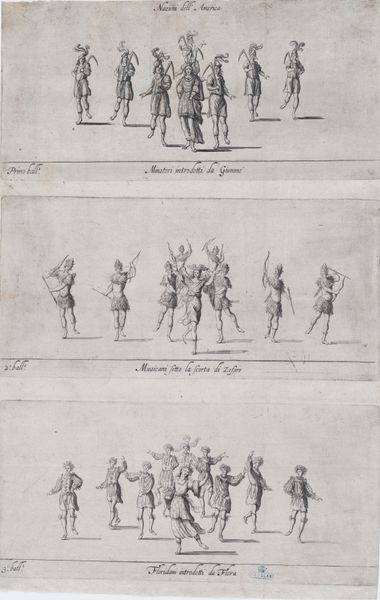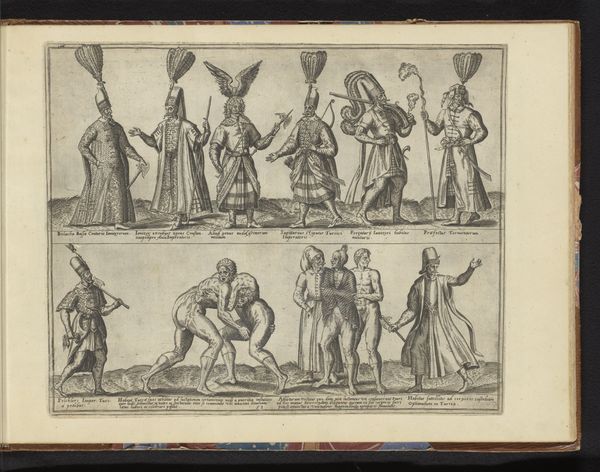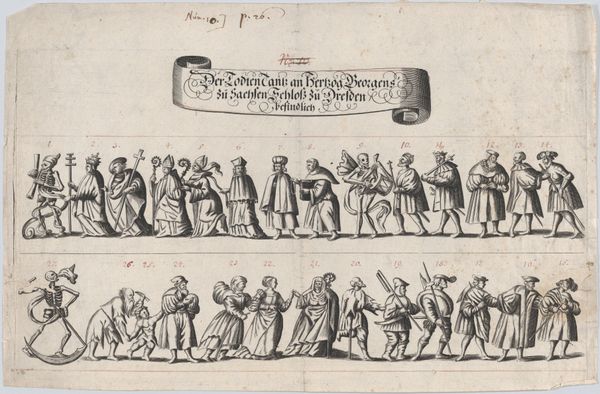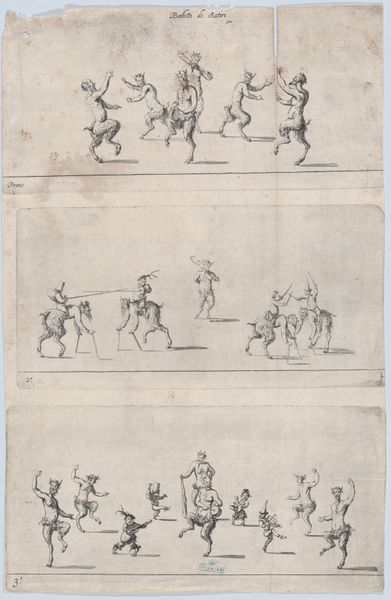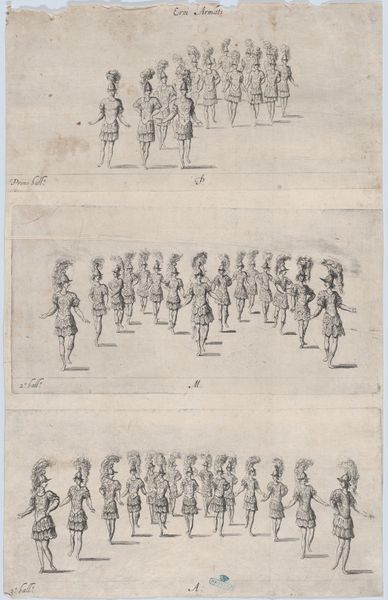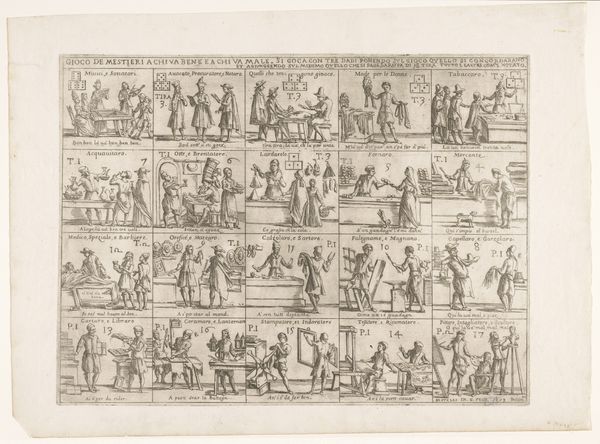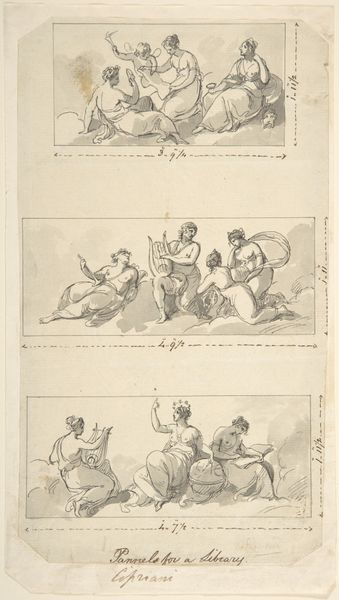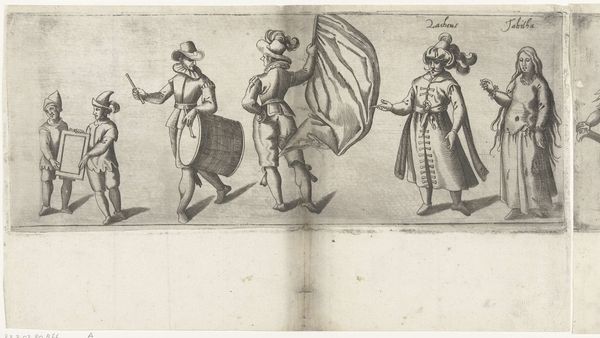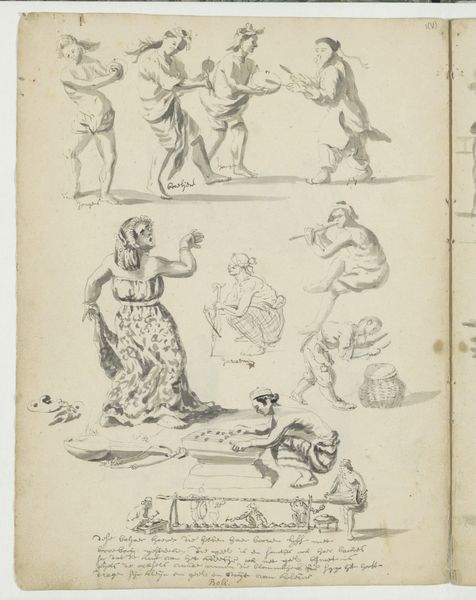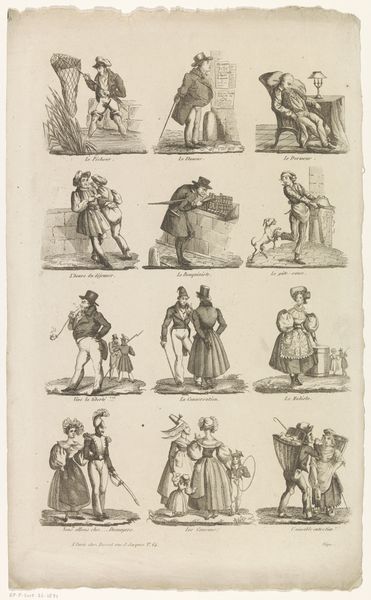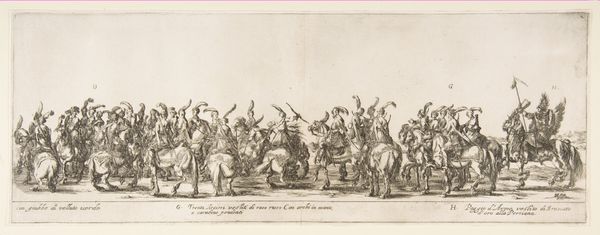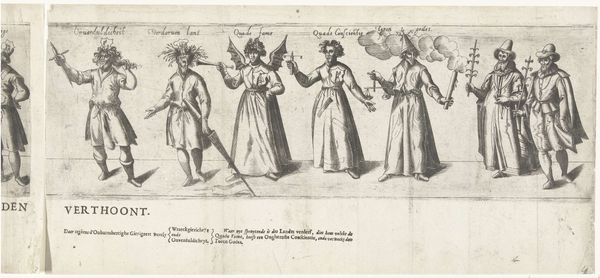
drawing, print
#
drawing
#
toned paper
#
light pencil work
#
quirky sketch
# print
#
incomplete sketchy
#
personal sketchbook
#
sketchwork
#
men
#
sketchbook drawing
#
watercolour illustration
#
sketchbook art
#
watercolor
Dimensions: Sheet: 15 1/2 × 9 13/16 in. (39.4 × 25 cm)
Copyright: Public Domain
Curator: Here we have "Nations of Europe ballets", an intriguing 17th-century drawing now residing at the Metropolitan Museum of Art. Its creator remains anonymous. What are your immediate impressions? Editor: It feels like a cultural record. I am immediately drawn to the figures' costumes and postures – they remind me of visual systems used to signify particular roles or identities in courtly performances. Curator: Indeed. What we see here is not merely aesthetic, but reflective of power dynamics within European nation-states. Notice how the composition emphasizes groups representing different nations: Italians, Swiss, Venetians, and Flemings each presented by mythological figures. What stories might be embedded within these visual choices? Editor: The appearance of Bacchus, of course, speaks of abundance, of celebrations and masquerades where identities are easily changed; while the appearance of Saturn presiding over the Flemish indicates restraint, discipline – a cultural grammar laid bare by these symbols. What do the characters signify? The poses, in some parts, almost evoke characters from the commedia dell'arte, which, if so, would serve to make each nationality seem caricatured or cartoonish. Curator: The choice of watercolor further highlights its role in recording performances meant to convey complex allegorical messages to the educated spectators. I would argue this form can perpetuate national stereotypes; the performance both constructs and reifies those stereotypes. Editor: And it subtly creates, confirms and entrenches the relationship between those identities, assigning roles within an ever-shifting global power game. Curator: Looking closer at these scenes allows us to reconsider our perception of "high art" in relation to entertainment. This drawing blurs the lines and gives us insight into how European societies defined themselves during an era marked by both cultural exchange and fierce national rivalries. Editor: The figures, despite their small scale, are like potent little containers holding all these complex stories of cultural encounter and aspiration. They help me reflect on the symbolic language of the 17th century, and, more pressingly, the relationship between identity, nation, and image to this day.
Comments
No comments
Be the first to comment and join the conversation on the ultimate creative platform.
